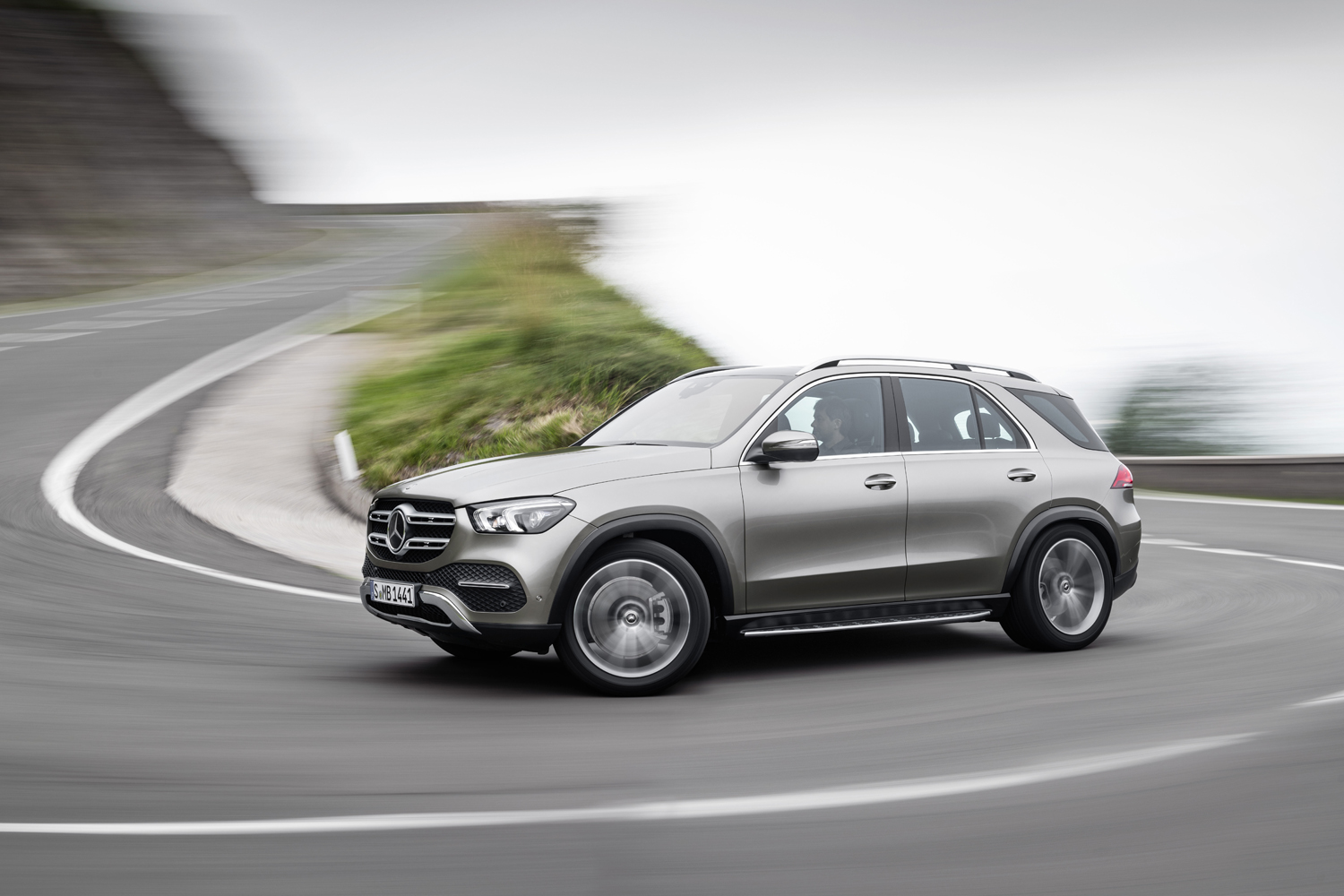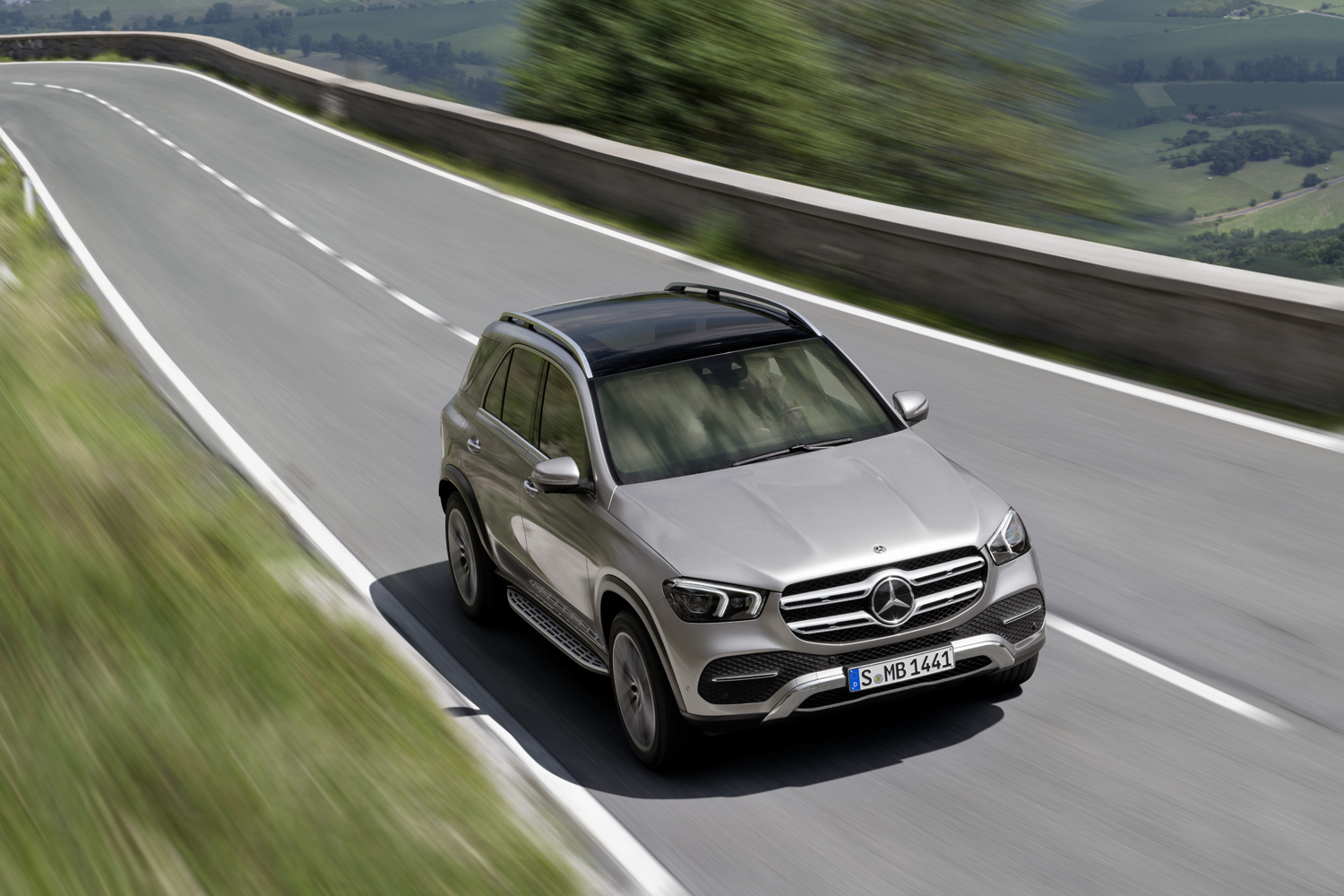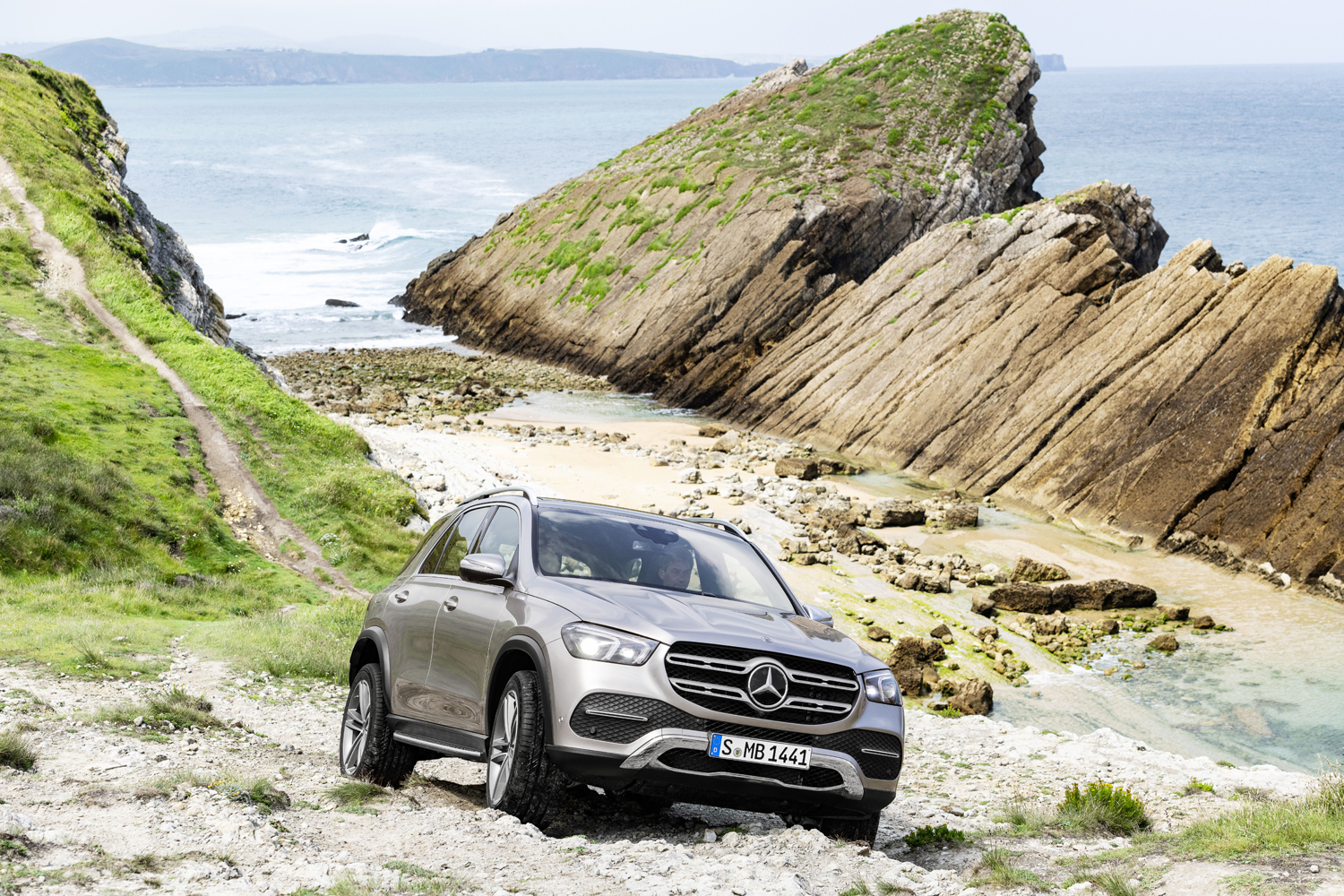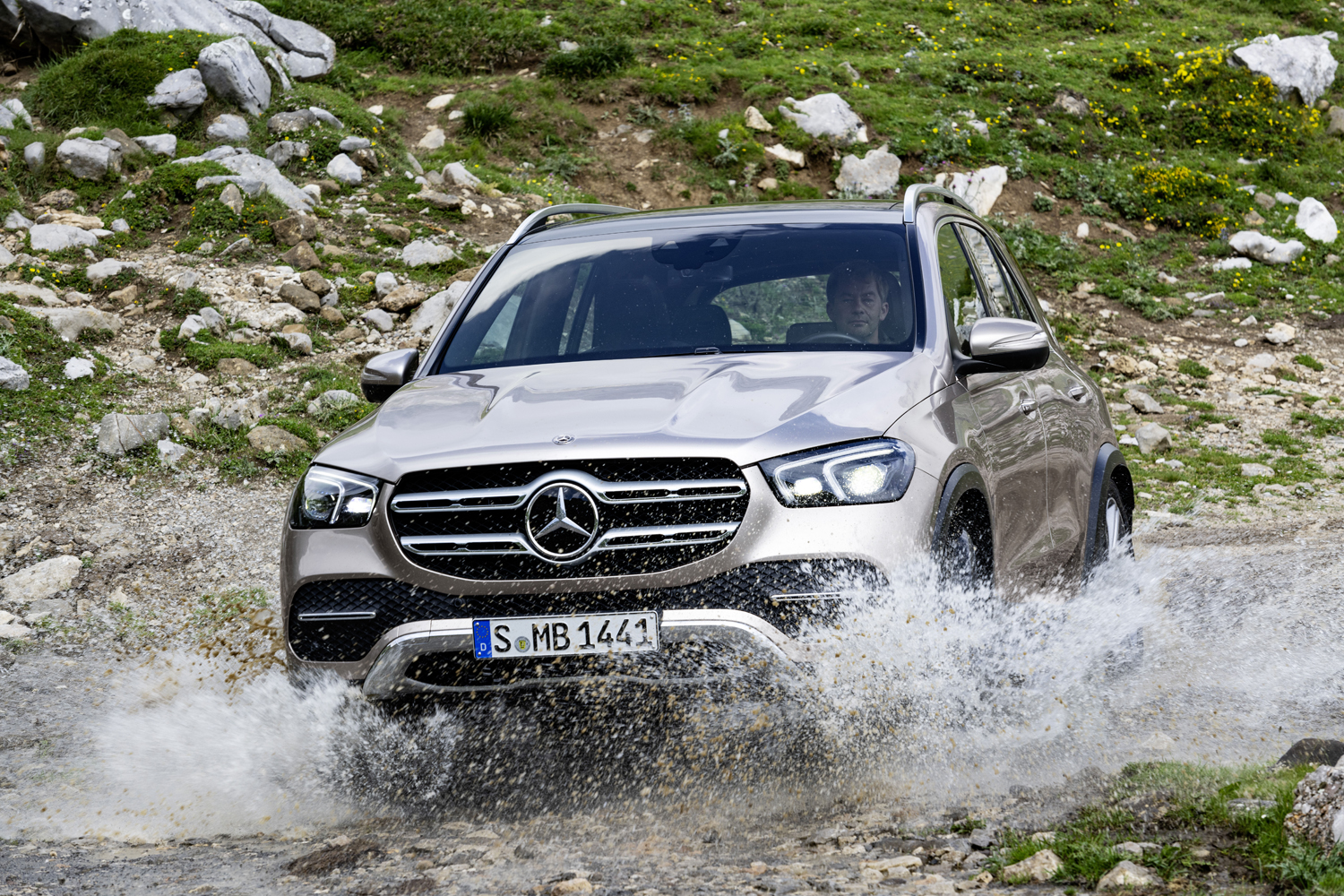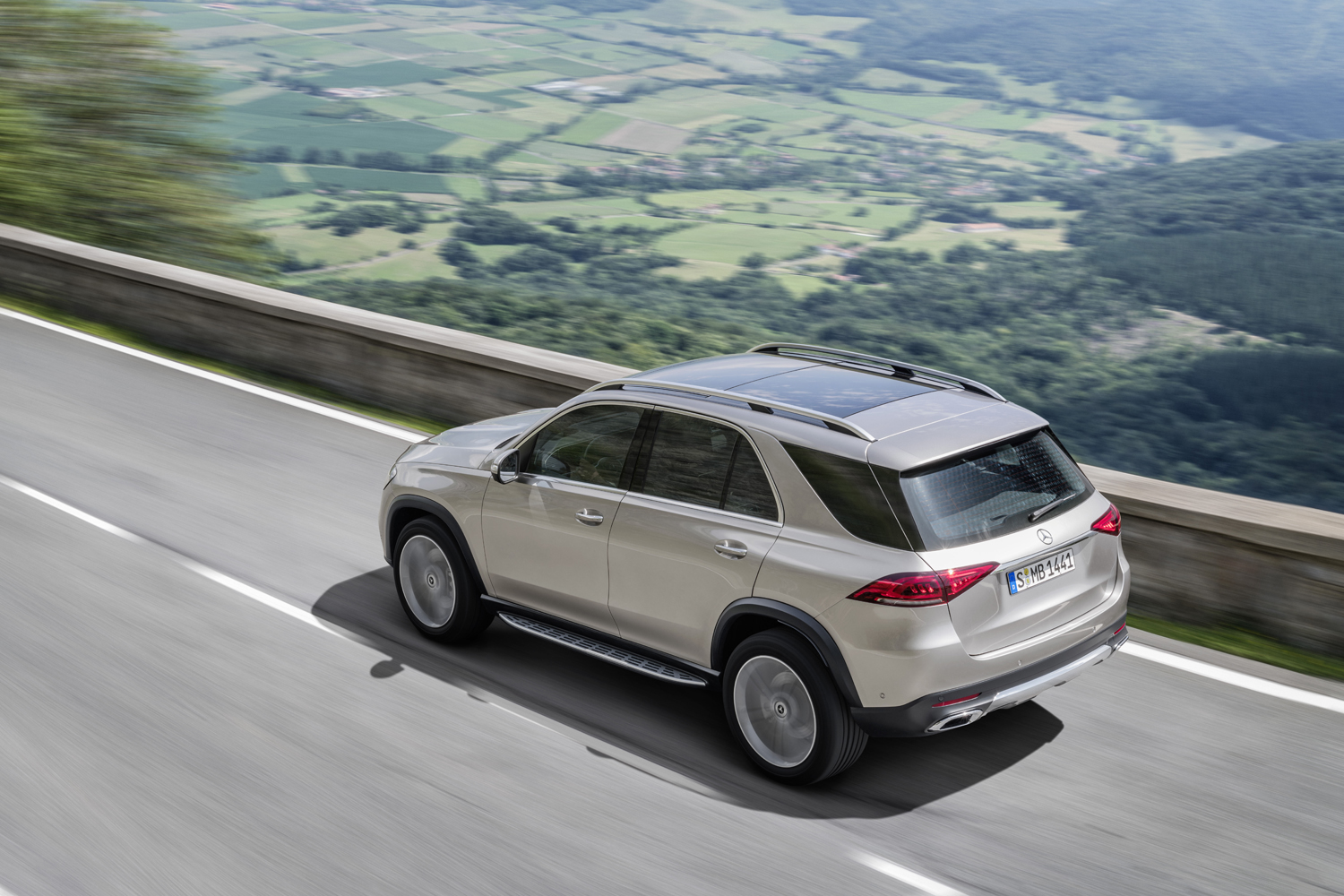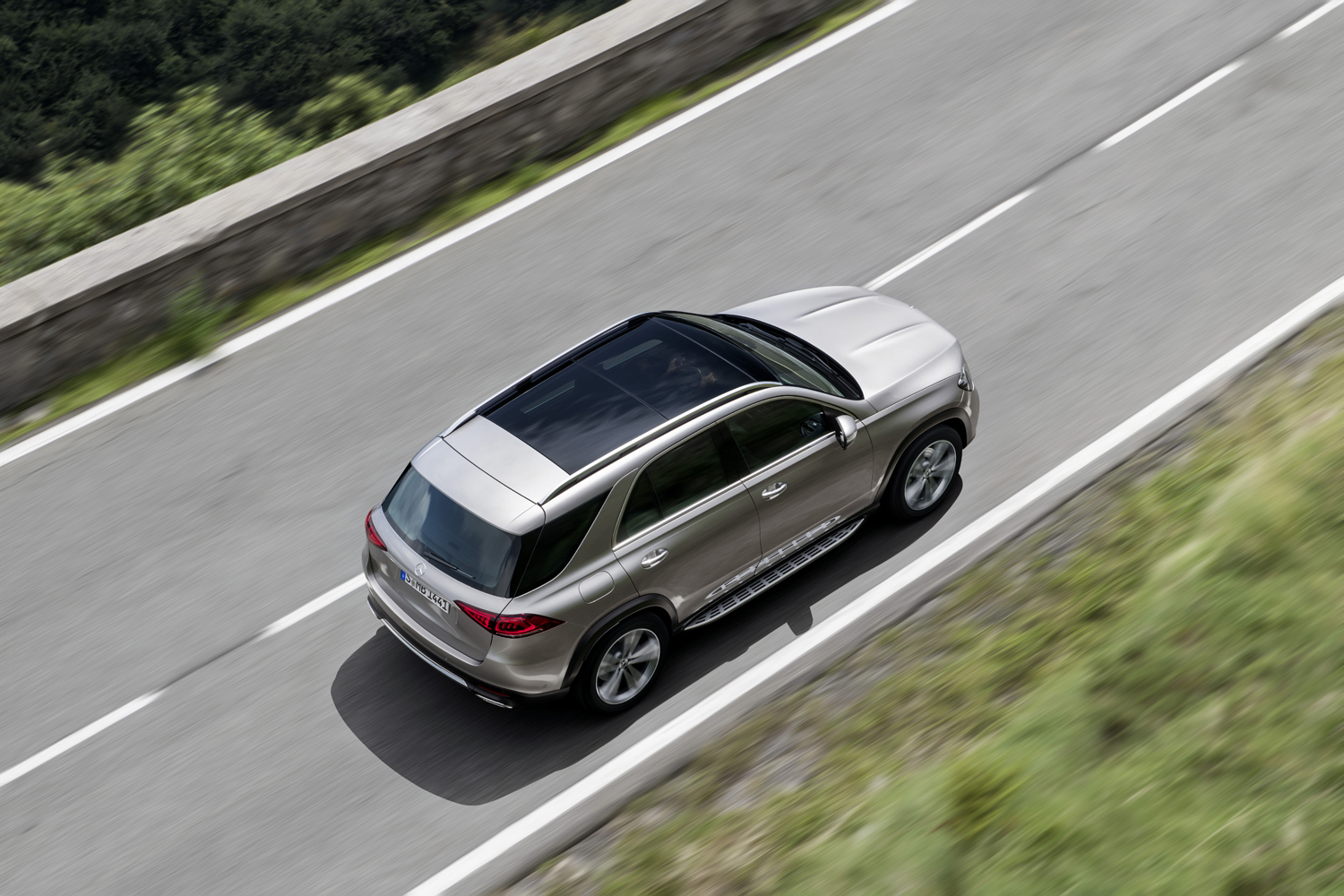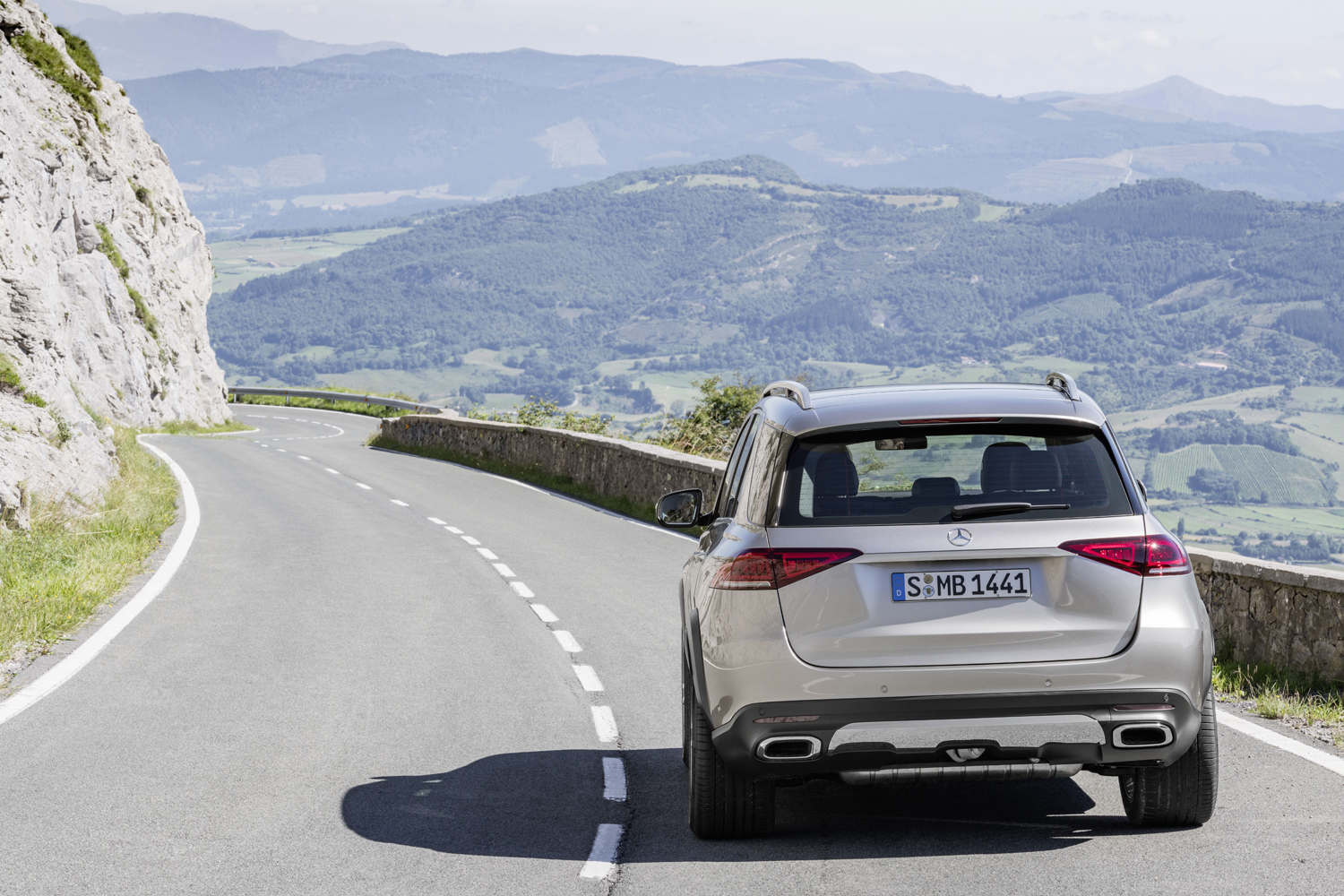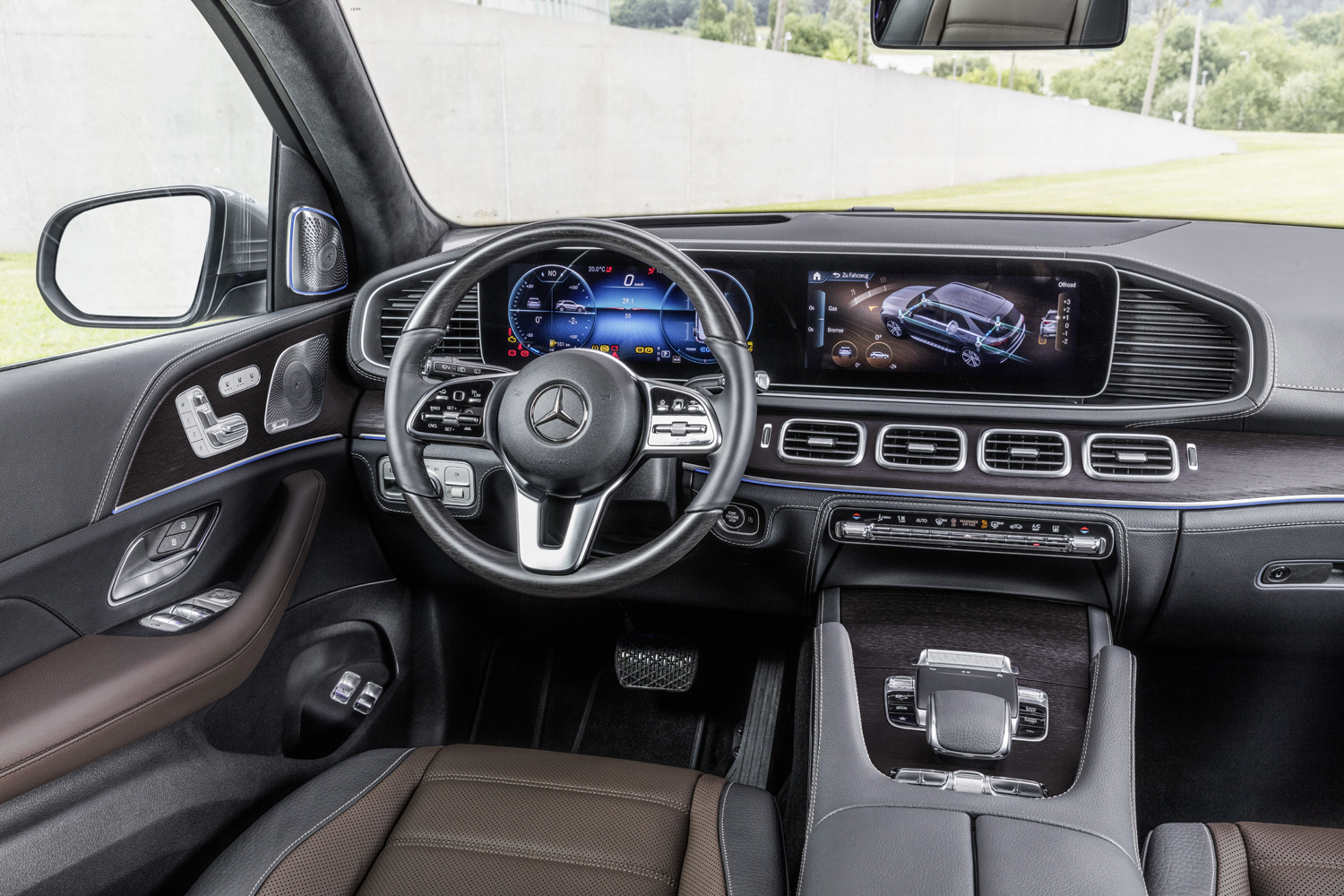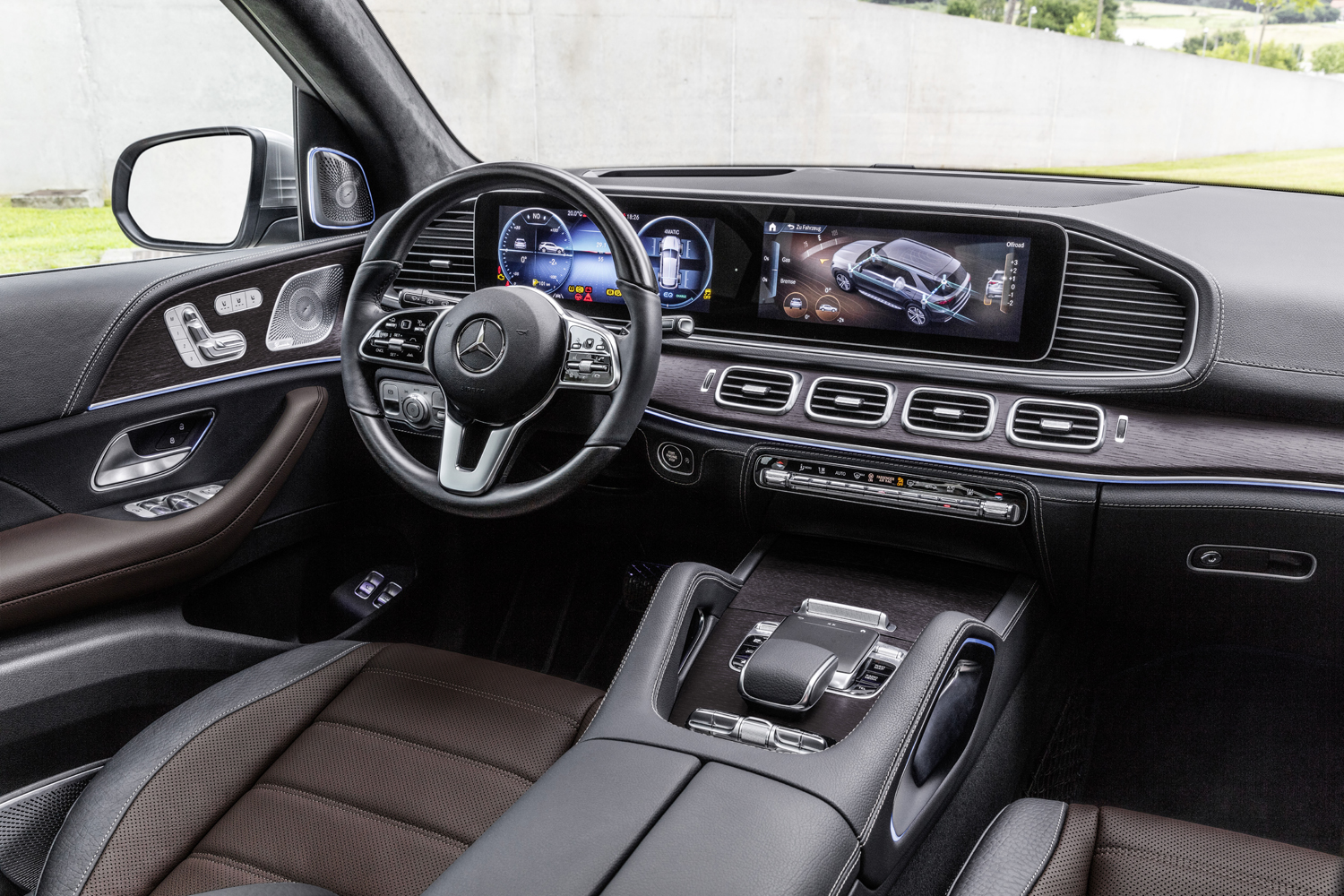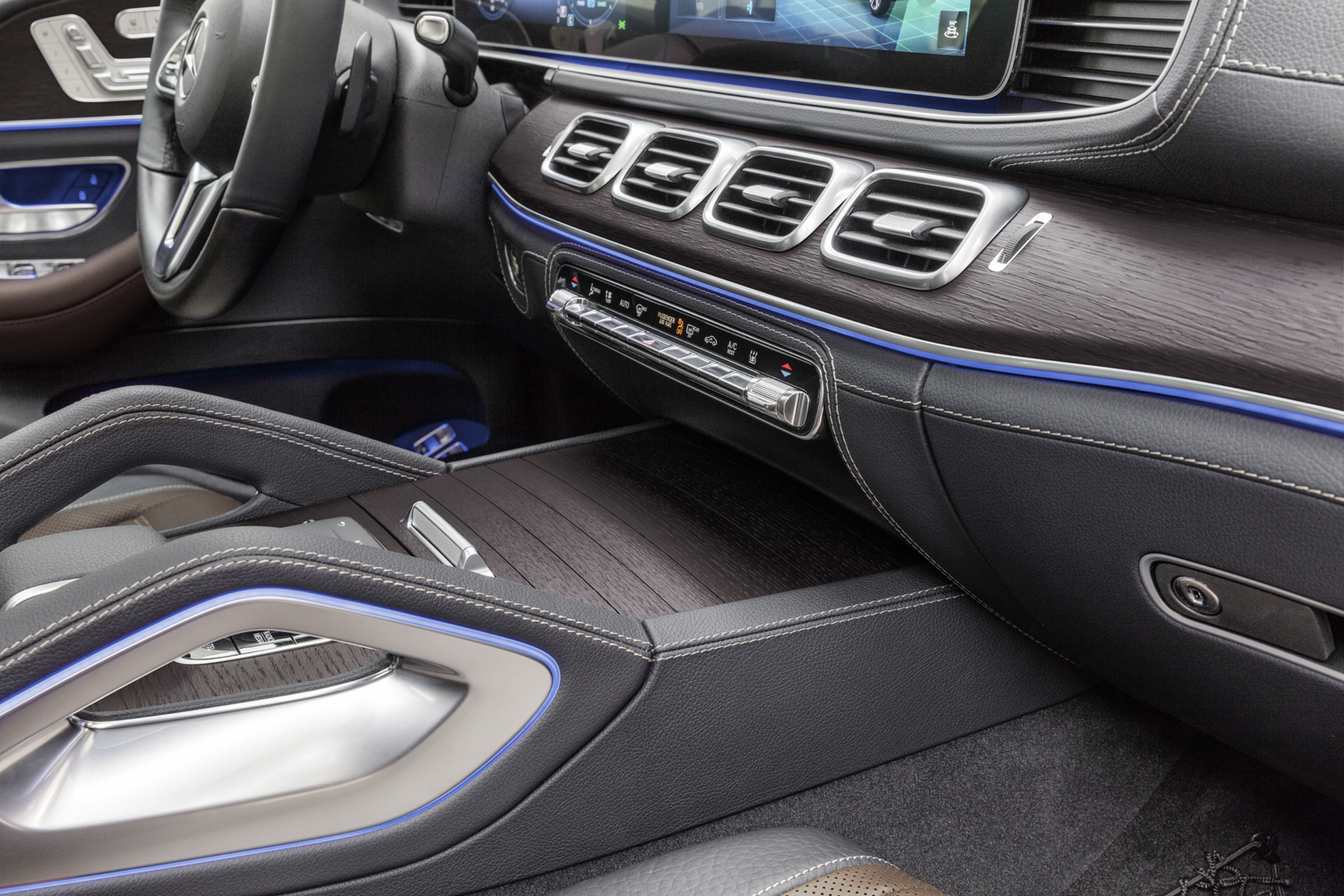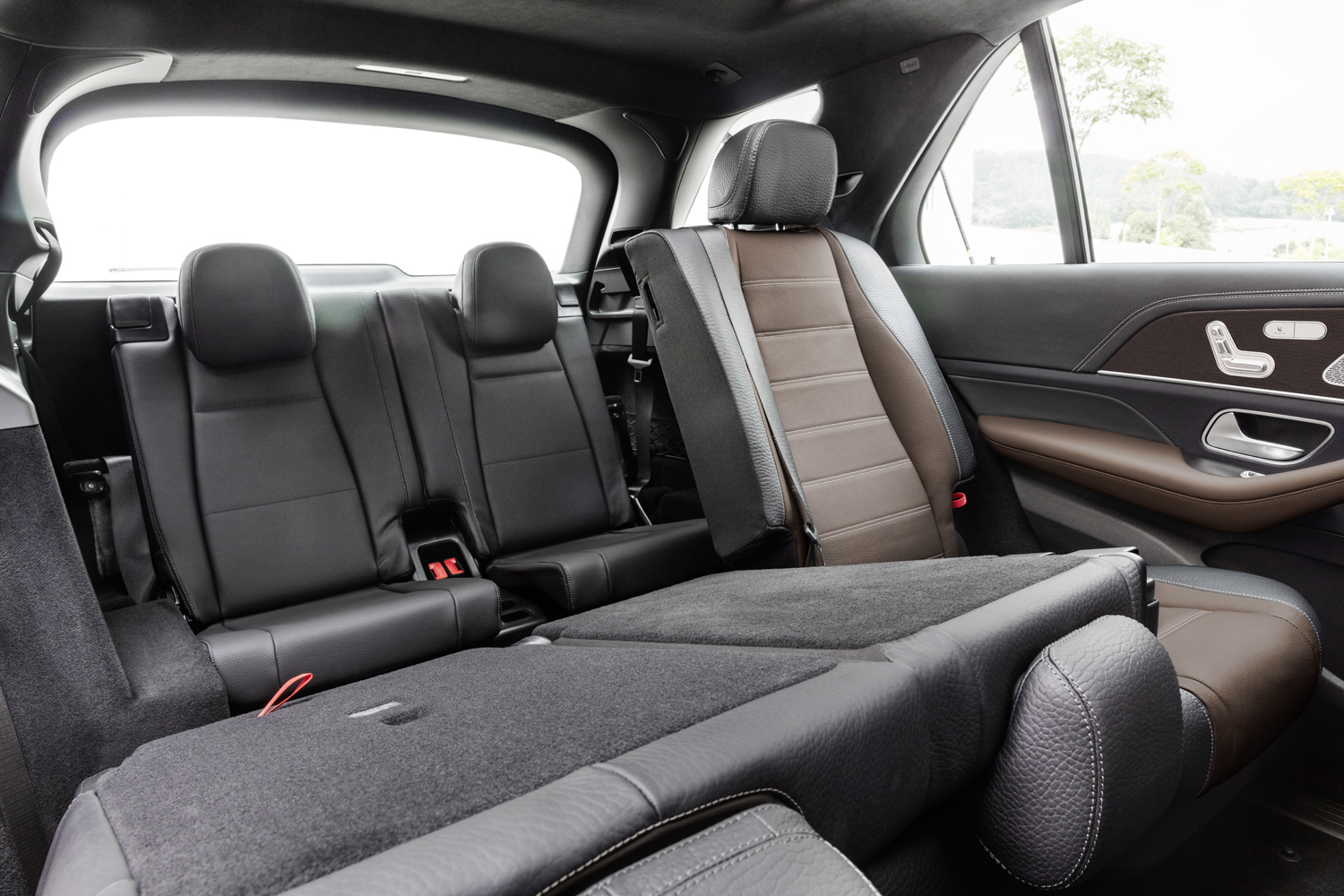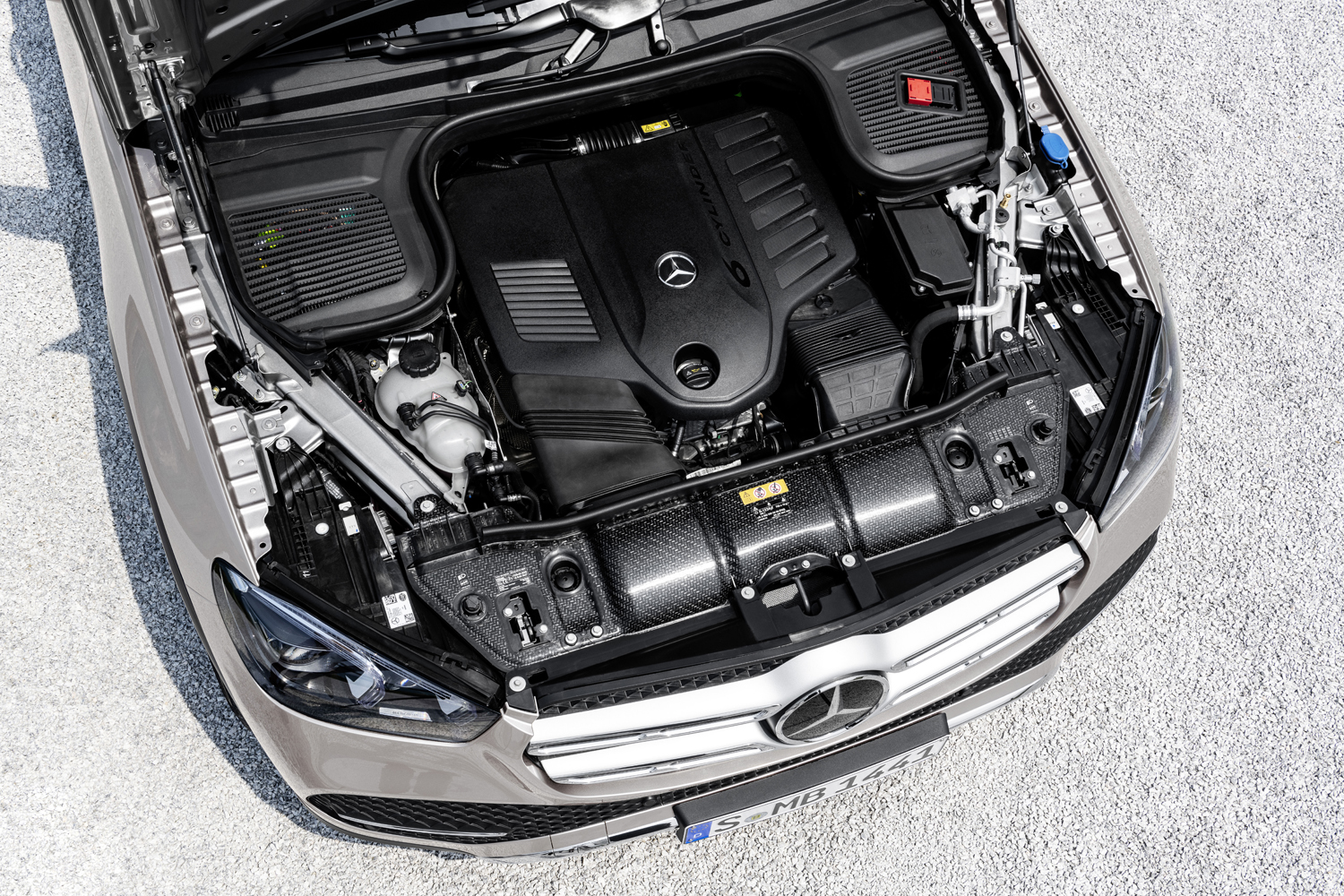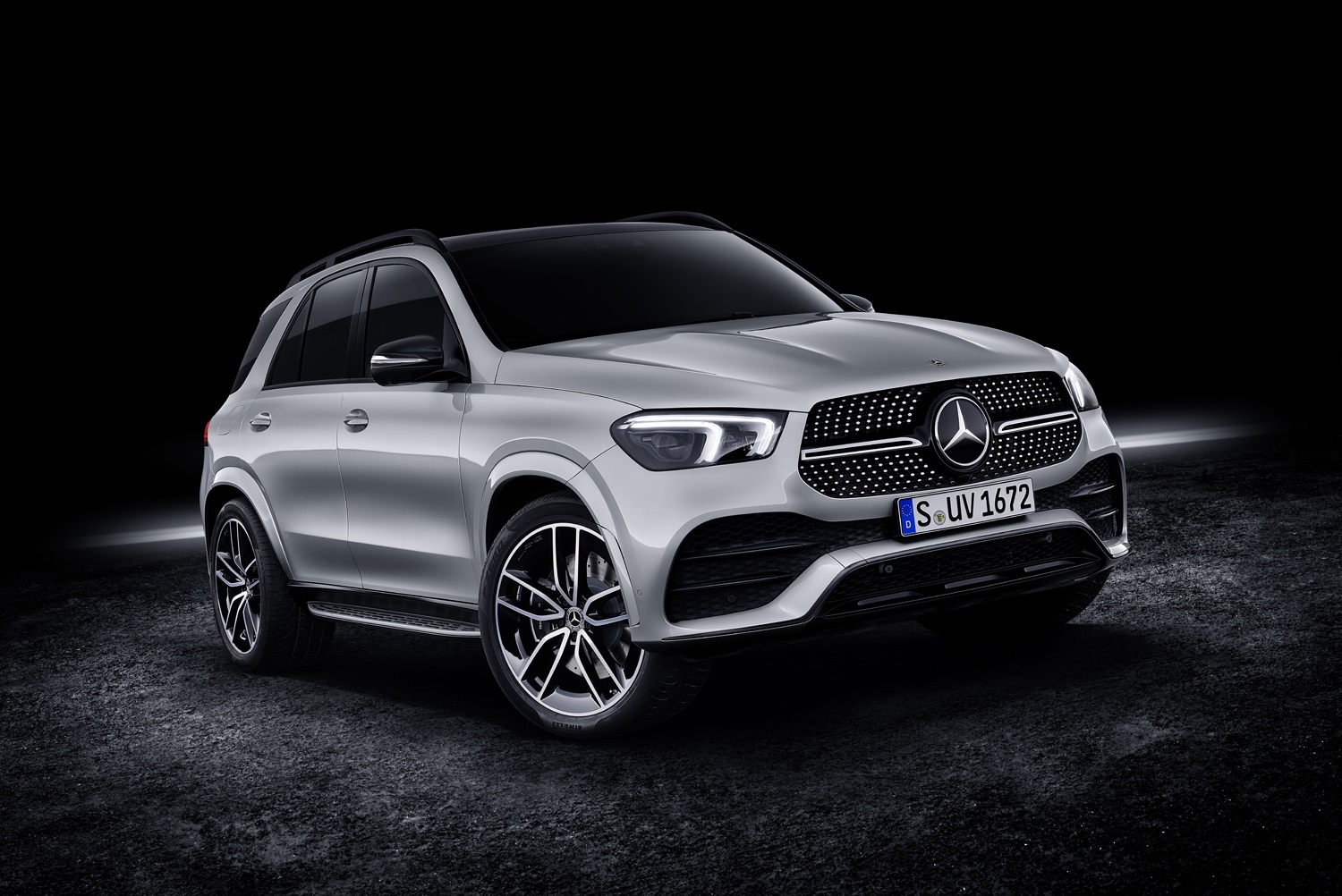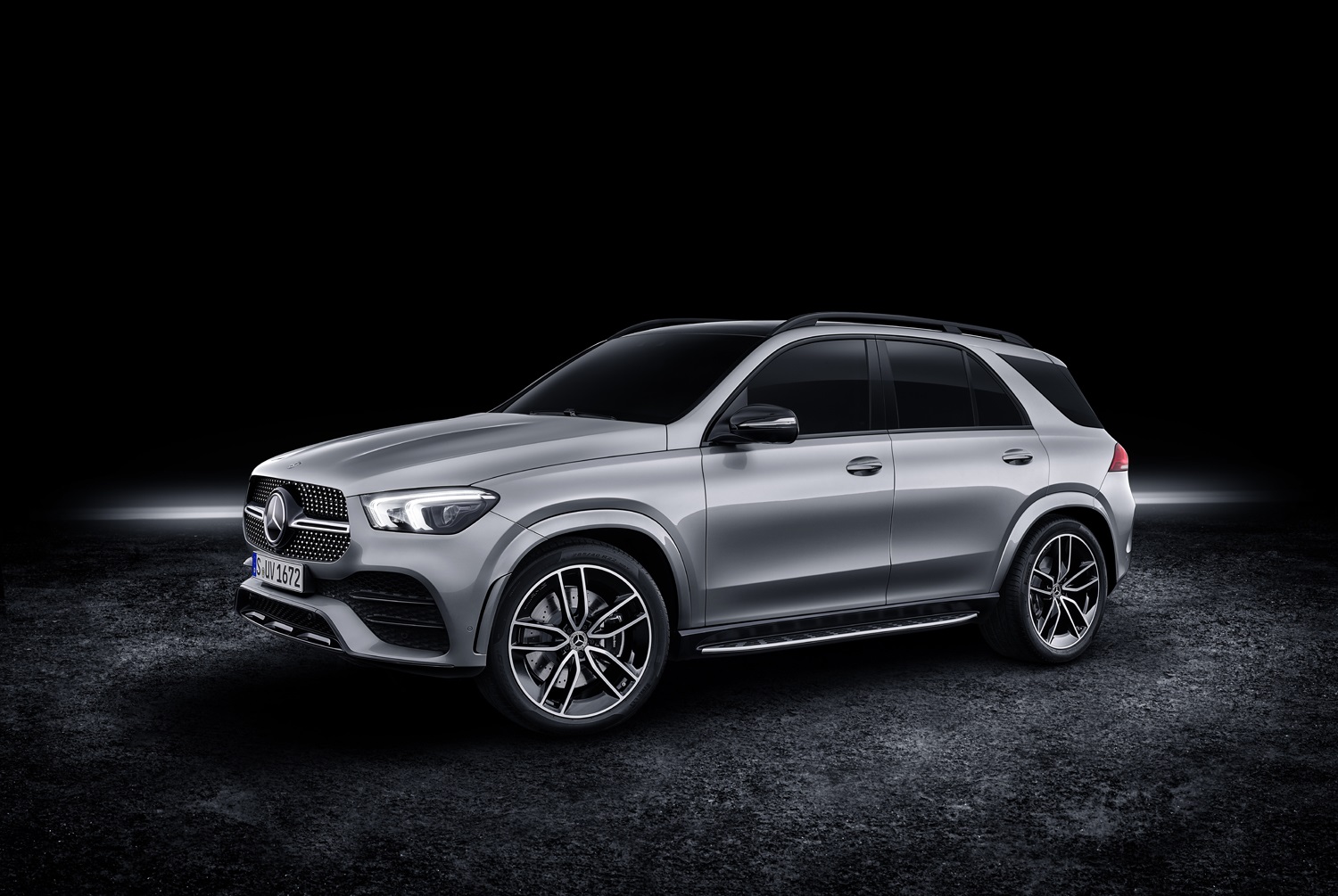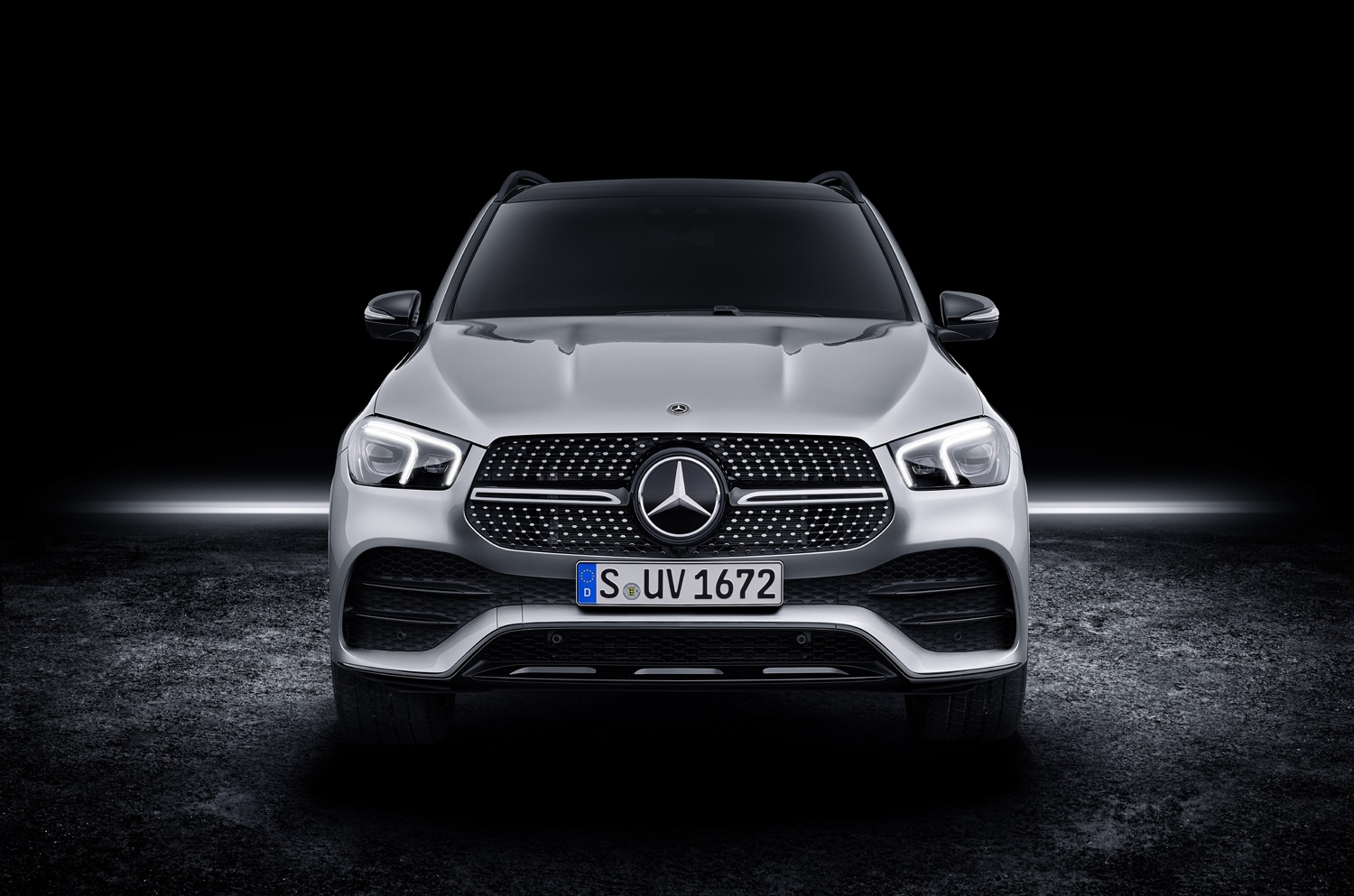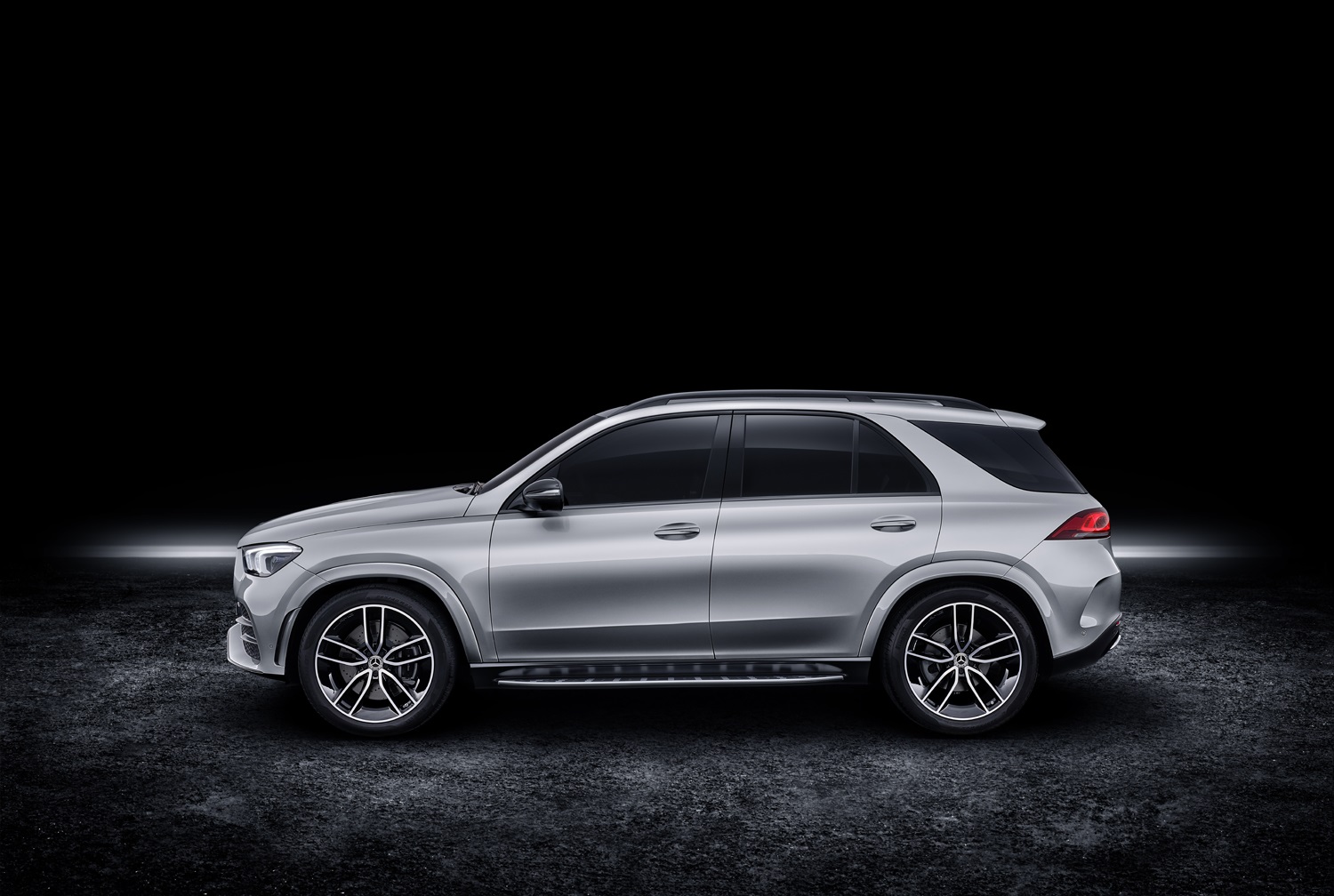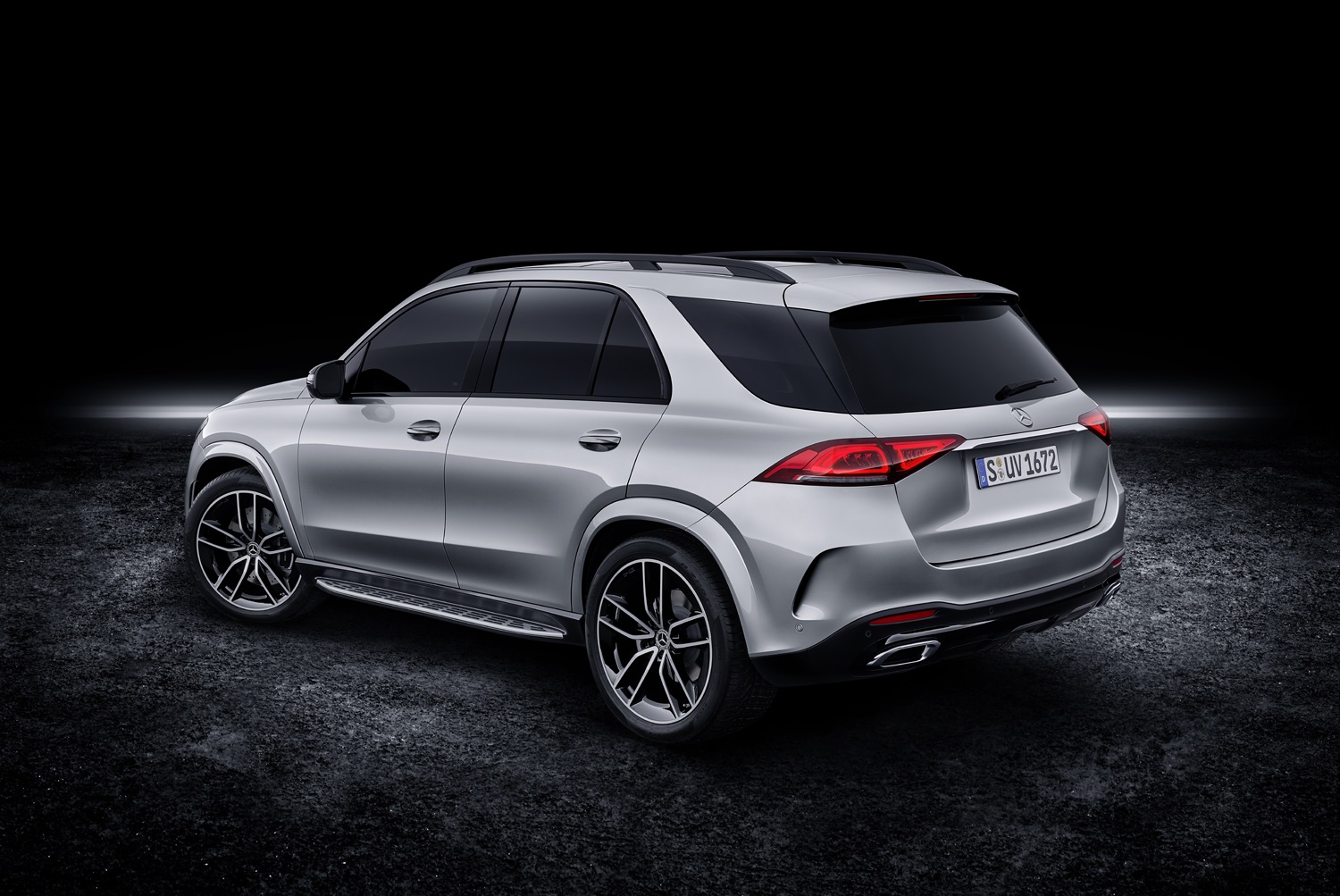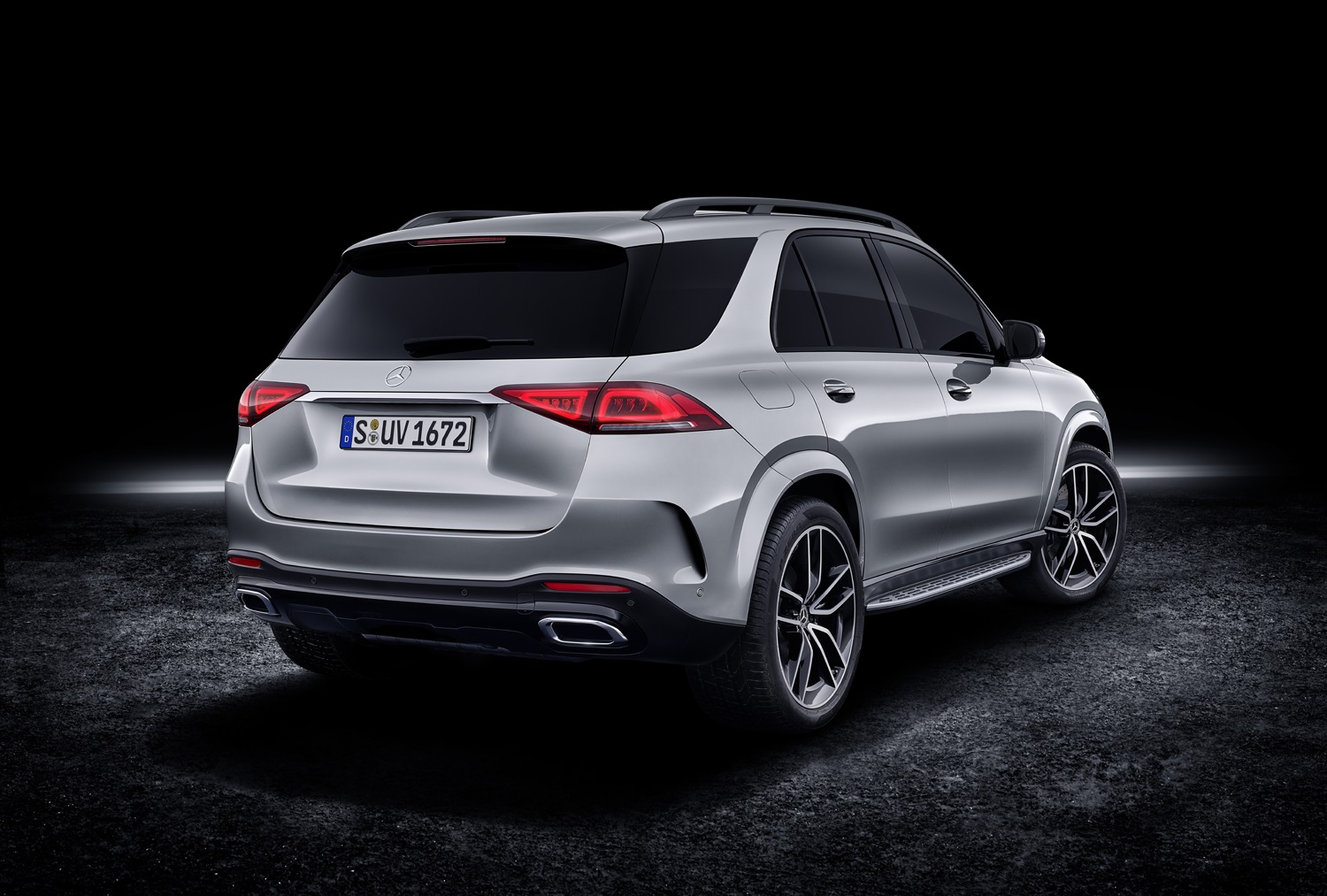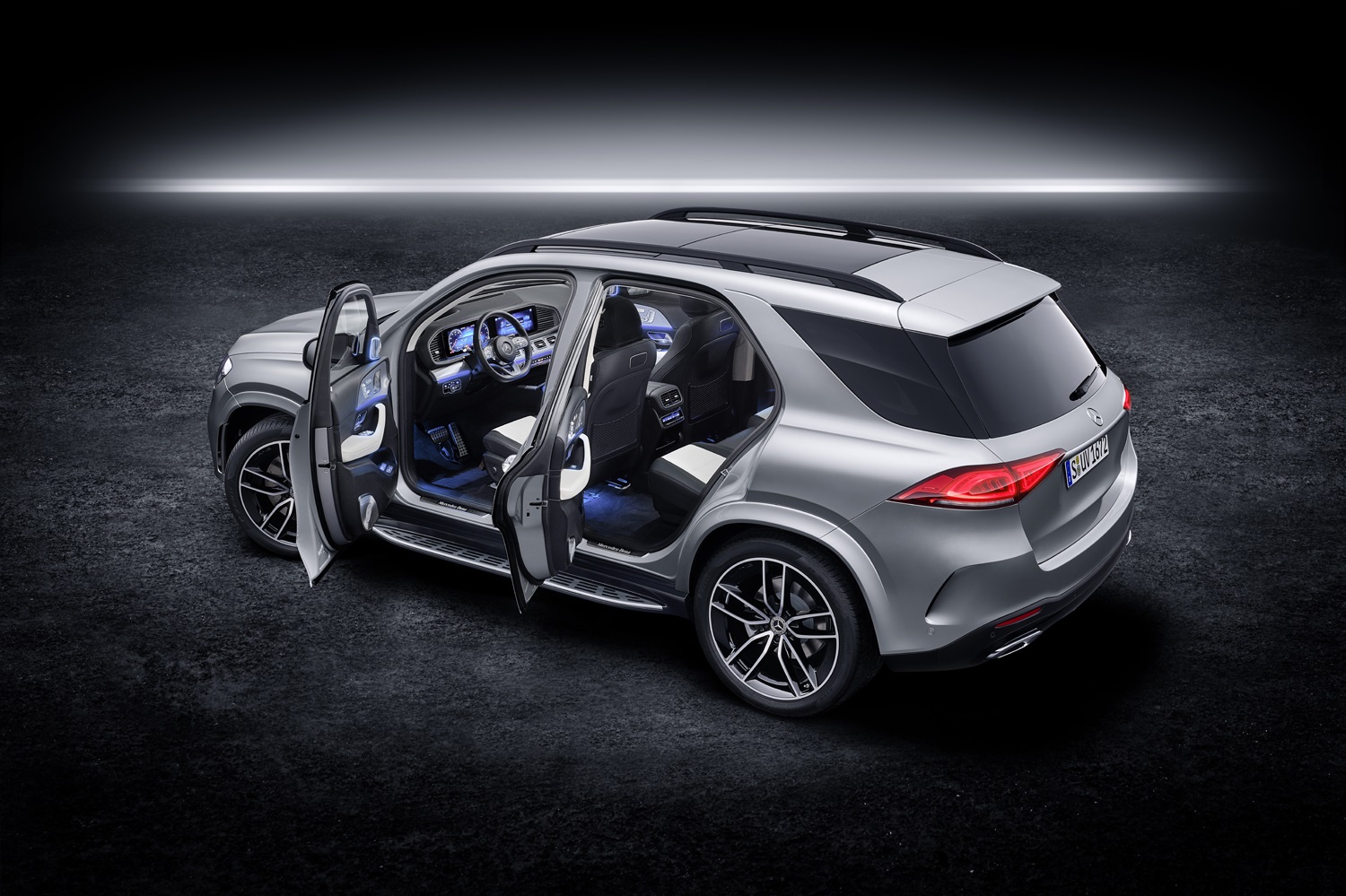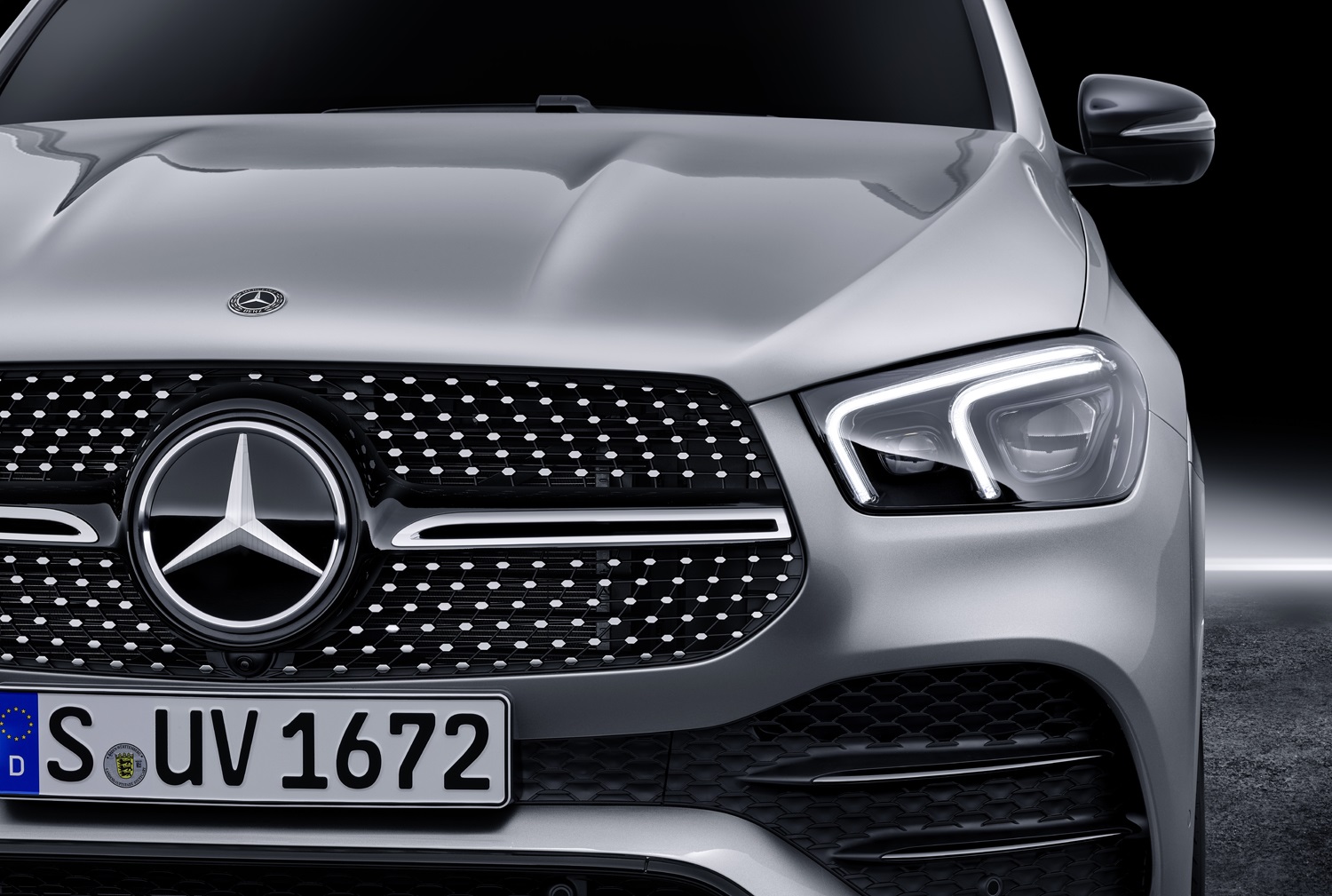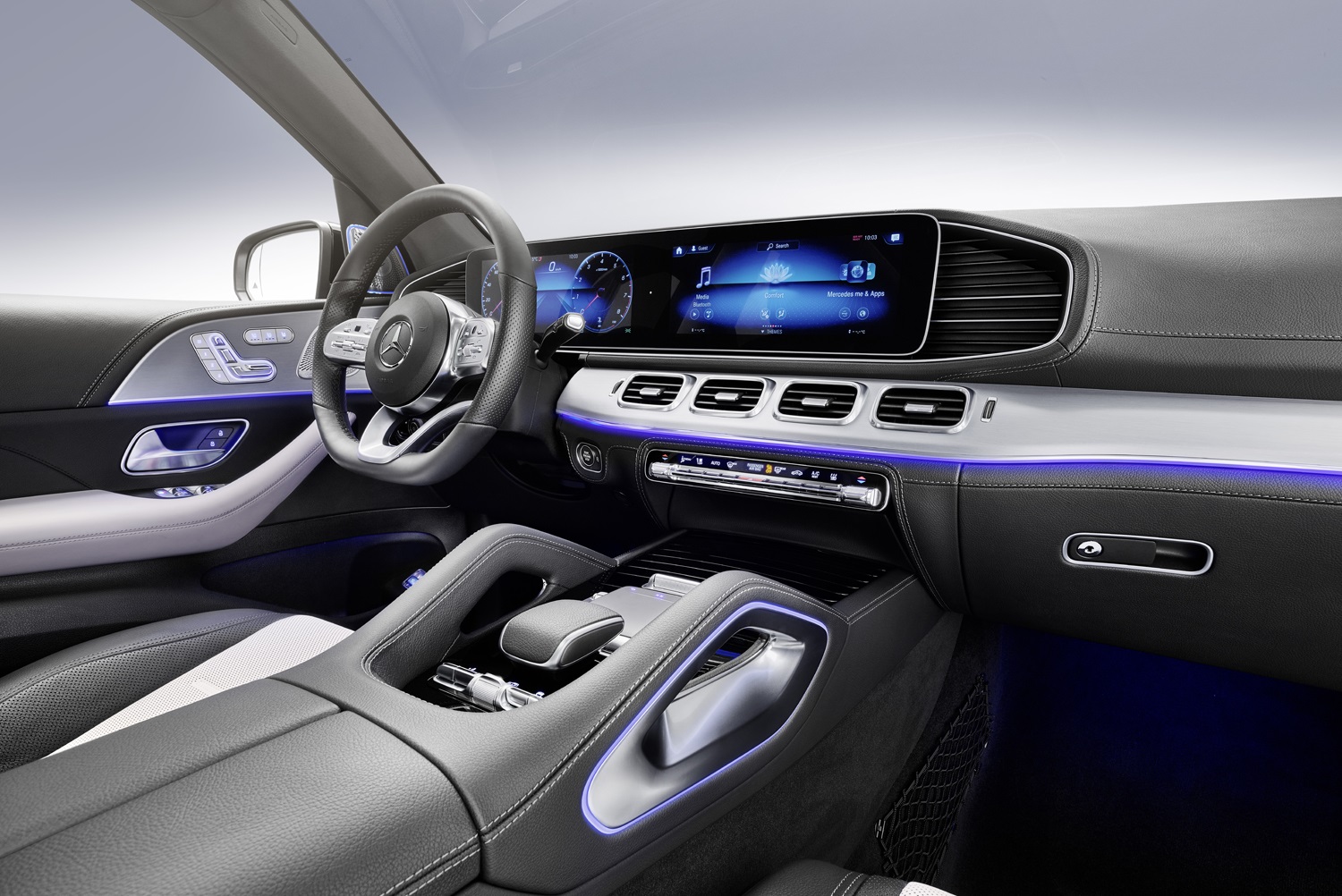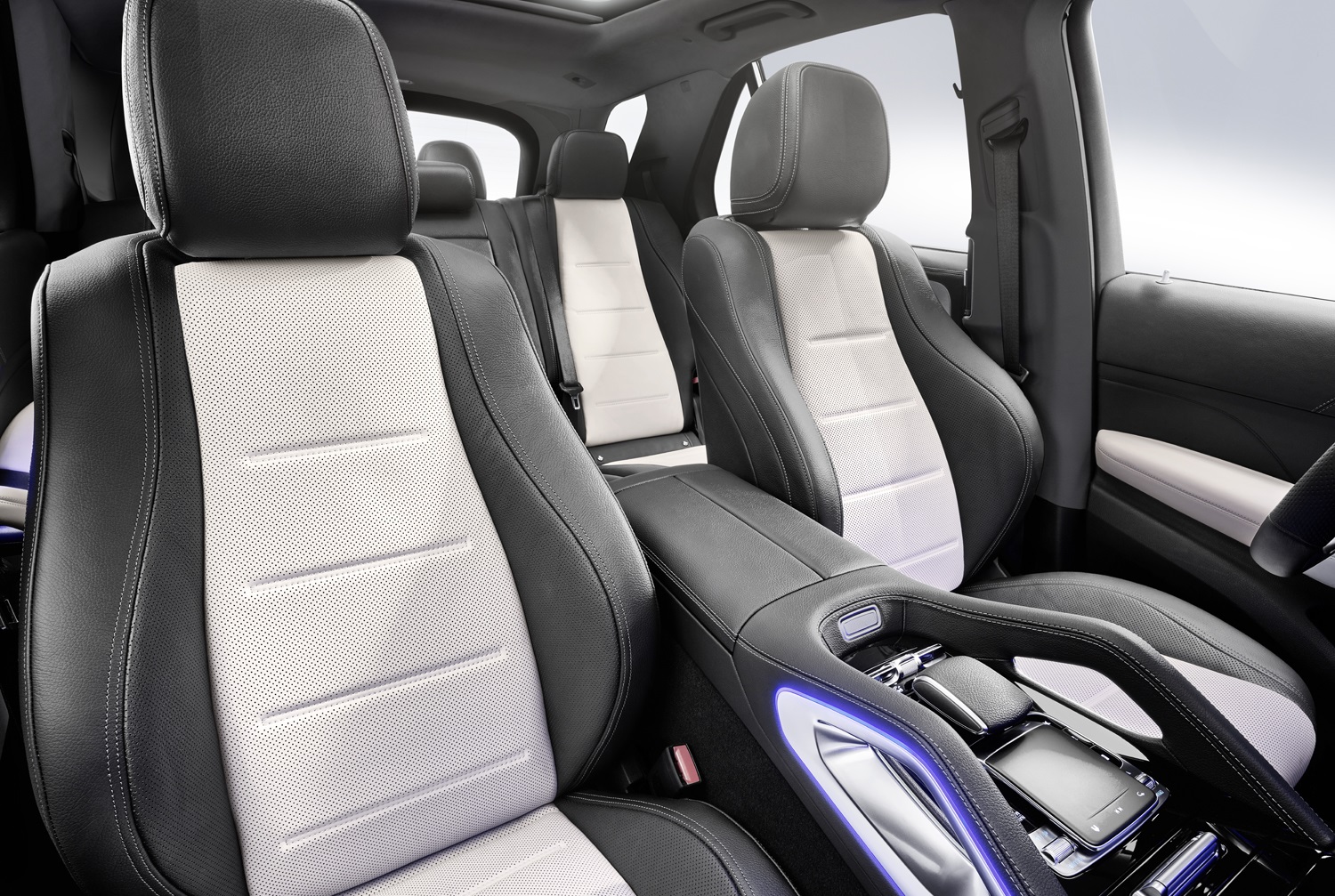The luxury SUV is fast replacing the luxury car, so Mercedes-Benz couldn’t afford to mess this one up. The new 2020 GLE revealed online boasts a sharper and more cohesive design than the outgoing model, a bigger selection of standard and optional technology features, plus an available mild hybrid powertrain. It’s ready for another Jurassic Park adventure should researchers discover something else survived on remote, dinosaur-infested island.
We like that Mercedes’ designers put in the effort to make the new GLE stand out from its predecessor and the growing list of SUVs it will share showroom space with. It’s not merely a scaled-up GLC. It gets a look of its own that retains the steeply raked c-pillar introduced on the 1997 M-Class which famously starred in The Lost World: Jurassic Park. Plastic cladding over the wheel arches and on the bottom part of both bumpers adds a rugged touch to the look.
The GLE is longer and wider than before. It seats up to seven, though the third row is best reserved for small children, and the list of options includes six-way power-adjustable second-row seats.
Every variant of the SUV comes standard with a pair of 12.3-inch screens mounted under a single glass pane for an elegant look. The screen behind the steering wheel replaces the analog instrument cluster. The one on the center stack runs the new MBUX infotainment system also found in the electric EQC. Optional gesture control technology lets the front passengers access functions (like the massaging seats, for example) without touching the screen. The technology even recognizes the driver’s hand from the front passenger’s so it knows which side of the car a command is coming from. If you want to feel like a magician, you can use the gesture control function to turn the reading lights on and off without pressing a button.
At launch, the lineup will include two models called GLE 350 and GLE 450, respectively. The 350 comes with a turbocharged, 2.0-liter four-cylinder engine that makes 255 horsepower and 273 pound-feet of torque. Rear-wheel drive and a nine-speed automatic transmission come standard, while Mercedes’ 4Matic all-wheel drive system is offered at an extra cost. The 450 receives the 3.0-liter straight-six that’s gradually spreading across the Mercedes portfolio; we recently tested it in the CLS. It makes 362 hp and 369 lb-ft. of torque on its own, but an electric motor contributes up to 21 hp for short bursts of time. It’s all-wheel drive-only.
The 450’s electric motor draws electricity from a 48-volt battery pack which also feed an advanced electronic suspension. It improves comfort by counteracting body roll, pitch, and squat. Mercedes added a free-driving mode which lets the GLE use its 48-volt suspension to rock itself free if it gets bogged down in a sand dune.
Mercedes will expand the GLE family with additional engines in the coming months. We expect a plug-in hybrid model will become the efficiency champ of the lineup. At the other end of the spectrum, the Mercedes-AMG-badged model could use a 600-horsepower evolution of the ubiquitous twin-turbocharged, 4.0-liter V8.
Built in Alabama, the 2020 Mercedes-Benz GLE will celebrate its world premiere at the 2018 Paris auto show. Sales will begin shortly after and Mercedes scheduled the first deliveries for the first half of 2019. Pricing hasn’t been announced yet. As a point of reference, the outgoing GLE starts at $52,500. When it arrives, the GLE will compete in the same segment as the BMW X5, the Audi Q7, the Jaguar F-Pace, the Lexus RX, and the Acura MDX.
Editors' Recommendations
- Mercedes-Benz G580 first drive: old-school off-roader goes electric
- 2025 Mercedes-Benz EQS sedan gets new face, bigger battery
- Mercedes-AMG EQE SUV first drive review: a better electric SUV
- Mercedes-Benz Vision One-Eleven concept looks to the past for inspiration
- Mercedes-Maybach EQS SUV is old-school luxury — electrified
